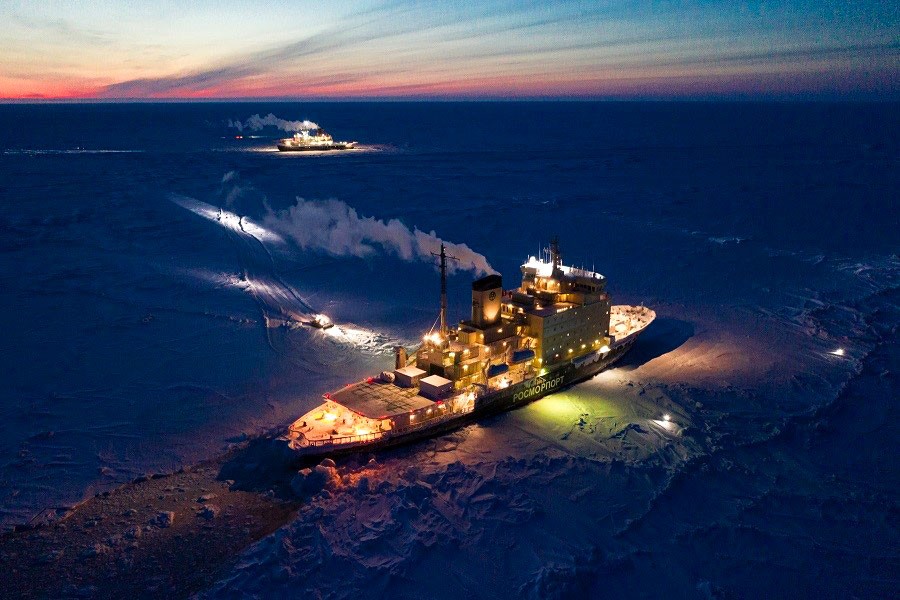From the Barents Observer, March 4:
After having set historical record in winter ice, Russian icebreaker «Kapitan Dranitsyn» requests assistance for return voyage to mainland.

The 129 meter long diesel-engined vessel on 28th February reached the site of German Arctic research vessel «Polarstern», a long-awaited encounter for the members of Arctic expedition MOSAiC. On board the Russian ship were researchers and crew that are to replace the personnel that has served in the desolate Arctic ice since mid-December 2019.Previously on the research ship:
Two days before the encounter, the «Kapitan Dranitsyn» had set a world record as it reached the northernmost position ever made by a diesel-engined vessel in winter time.
The «Kapitan Dranitsyn» dropped anchor 970 meters from «Polarstern», moored to the same floe and the handover of personnel and 43 tons of goods soon afterwards started across the frozen water.
The transfer took place at 88°28 North, the Alfred Wegner Institute informs.
Help needed
The operation is part of the MOSAiC research expedition and has been carefully planned for many months. But not everything went as planned.
The Russian icebreaker experienced extreme hardships on its way north. The ship set out from Tromsø, Norway, on the 3rd of February and encountered highly difficult conditions as it later made it through the ice.
Ice thickness in parts of the area is as much as 160 cm and several places pack ice hummocks have grown several meters tall....MORE
Icebreaking Research Vessel "Polarstern" To Depart Tromsø For One-Year Polar Expedition
Here's a look at the ice thickness way up north from the Danish Meteorological Institute:
The Russian Northern Sea Route on the right side in this view is not growing the thicker ice—the greens into yellows—that you would like to see by this time of year.
Part of the reason is those giant Siberian rivers, much moreso than Canada's Mackenzie, stir up a lot of the thermocline and even more importantly the halocline, the vertical salinity gradient.
I've asked people who know a lot more about this stuff than I do if the icebreakers are changing the albedo of the ice and the two answers I get are 1) it doesn't matter much in the winter, no sunlight, no albedo and 2) probably not enough in the summer and fall to matter, yet.
But still I wonder. And Putin wants to double or triple the traffic over the next few years. That's on top of this, from the Barents Observer February 28:
Russian Arctic shipping up 430 percent in three years
The good news on the ice cap is the Bering Sea and Straits top center which has their greatest thickness in the last few years, and the Fram Strait which appears to have ice all the way from Greenland to Svalbard/
It makes things easier for the polar bears should they wish to go visit their cousins in one locale or the other.